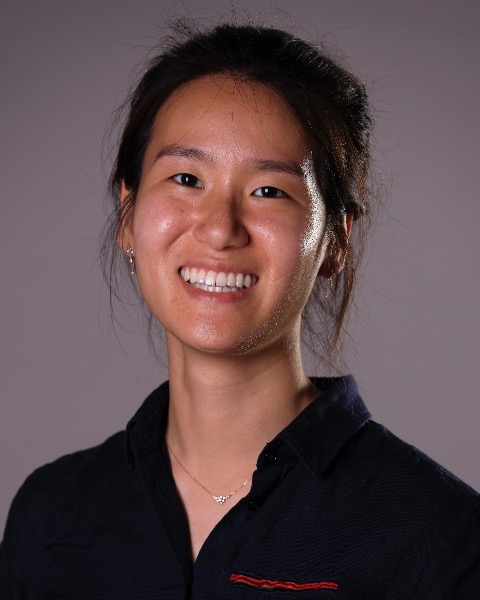Cellular and Molecular Bioengineering
High‑Content Single‑Cell and Spatial Profiling Platforms
Vertically Aligned Nanowires for Longitudinal Intracellular Sampling
Thursday, October 9, 2025
4:30 PM - 4:45 PM PDT
Location: Room 33C

David Reynolds
PhD Student
University of Pennsylvania
Philadelphia, Pennsylvania, United States
Jina Ko, PhD
Assistant Professor
University of Pennsylvania, United States
Presenting Author(s)
Primary Investigator(s)
Introduction: : Cells are diverse systems with unique molecular profiles that support vital functions like energy production and nutrient absorption. Advances in omics have provided valuable insights into these cellular processes, but many of these tools rely on cell lysis, limiting the ability to track dynamic changes over time. To overcome this, methods for longitudinal profiling of living cells have emerged; however, challenges such as low throughput and genetic manipulation still need to be addressed. Nanomaterials, particularly nanowires, offer a promising solution due to their size, high aspect ratios, low cost, simplicity, and potential for high-throughput manufacturing. Here, we present a nanowire-based platform for longitudinal mRNA profiling in living cells, using vertically aligned nickel nanowire arrays for efficient mRNA extraction with minimal cellular disruption. We demonstrate its ability to track enhanced green fluorescent protein expression and transcriptomic changes from drug responses in the same cells over time, showcasing the platform's potential for dynamic cellular analysis.
Materials and
Methods: : Nickel nanowires were fabricated using an anodized aluminum oxide (AAO) template with 80 nm pores and a sputtered copper backing for electrodeposition. Nanowires were grown using a Watts Ni plating solution at 65°C, then released by sequential NaOH etching and dried via critical point drying. SEM and EDS confirmed morphology and composition, while zeta potential was measured on sonicated nanowires. Human cancer cell lines (A431, A549, A375) were cultured in PDMS wells and stamped with nanowires for intracellular RNA extraction. Extracted RNA was purified, treated with DNase, and reverse-transcribed for qPCR analysis. Cell viability post-extraction was assessed using calcein AM and propidium iodide staining. Nanowire-based RNA extraction was compared to conventional lysis using TRIZOL for transcript abundance. Cell membrane permeability following nanowire stamping was evaluated using FITC-dextran uptake and immunofluorescence. Longitudinal monitoring of eGFP-transfected A549 cells and GFP-positive A375 cells assessed temporal resolution by repeated nanowire extractions over several time intervals. For drug response studies, luciferase-labeled A375 cells were treated with Ulixertinib, and RNA was sampled via nanowire extraction across multiple timepoints to evaluate gene expression changes.
Results, Conclusions, and Discussions:: In this work, we present a proof-of-concept for using vertically aligned nanowires to monitor gene expression changes in live cells over time. We developed an economical and simple method for fabricating high-aspect-ratio Ni nanowires and ensuring their stable vertical alignment, a feature that we show is essential for effective intracellular extraction. Through a series of optimizations, we confirmed that the mRNA extracted using our nanowires accurately represents the total RNA obtained from complete cell lysis. Our technology offers a temporal resolution of 6 hours while maintaining high cell viability (>95%). Additionally, we validated that there are no transcriptional differences between stamped and unstamped cells after 48 hours. Unlike other temporal monitoring methods, our device does not require genetic manipulation and can simultaneously monitor over 100,000 cells, demonstrating its scalability and potential for clinical applications.
Acknowledgements and/or References (Optional):: Related works:
1. D.E. Reynolds, Y.H. Roh, D. Oh, P. Vallapureddy, R. Fan, and J. Ko. (2025) “Temporal and Spatial Omic Technologies for 4D Profiling.” Nature Methods. https://doi.org/10.1038/s41592-025-02683-6
2. D.E. Reynolds, Y. Sun, X. Wang, P. Vallapureddy, J. Lim, M. Pan, A. Fernandez Del Castillo, J. C. T. Carlson, M.A. Sellmyer, M. Nasrallah, Z. Binder, D.M. O’Rourke, G.L. Ming, H. Song, and J. Ko. (2024) “Live Organoid Cyclic Imaging.” Advanced Science, 2309289. https://doi.org/10.1002/advs.202309289 (Hot Topic: Bioorthogonal Chemistry)
